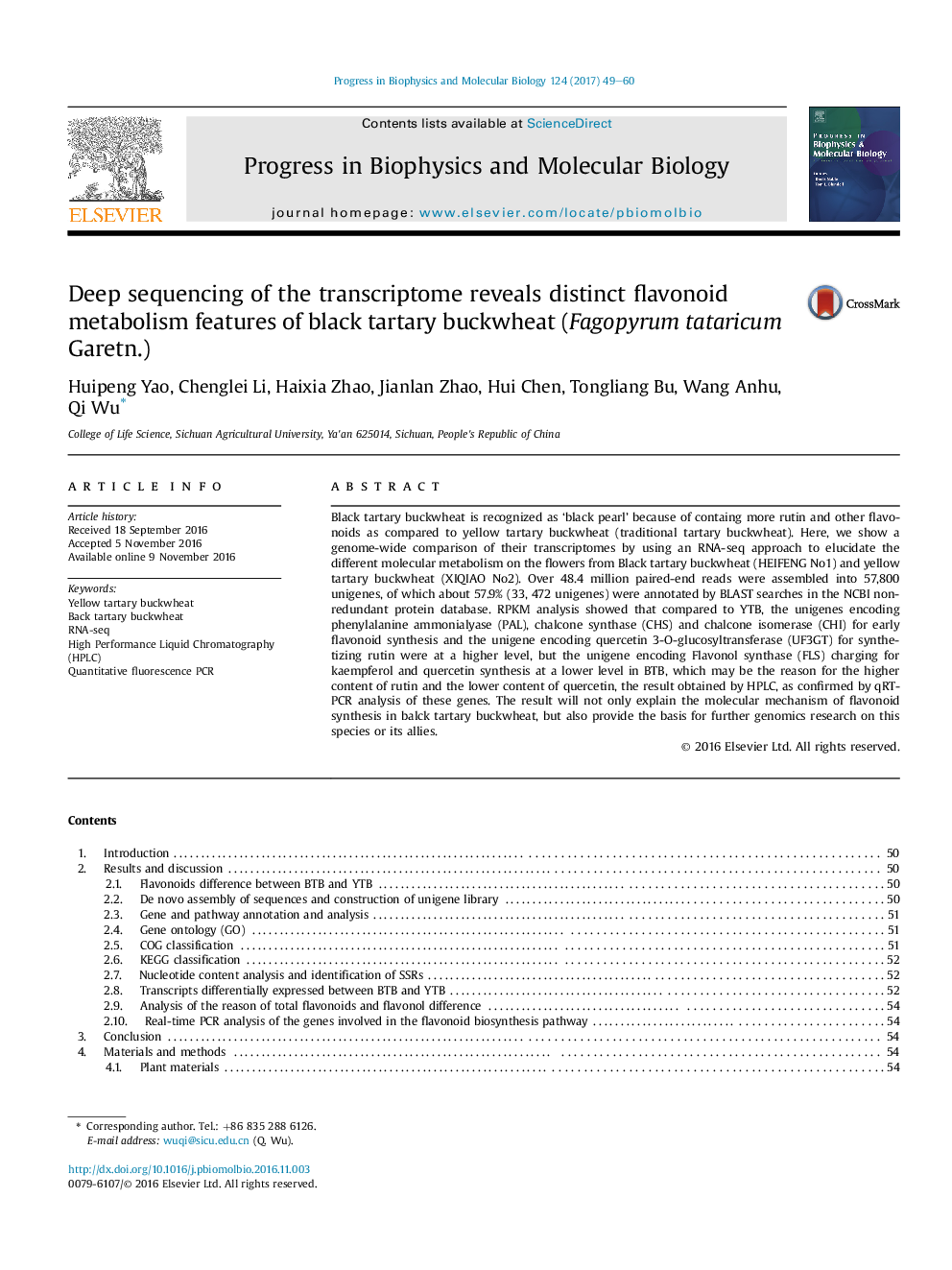| Article ID | Journal | Published Year | Pages | File Type |
|---|---|---|---|---|
| 5519889 | Progress in Biophysics and Molecular Biology | 2017 | 12 Pages |
Black tartary buckwheat is recognized as ‘black pearl’ because of containg more rutin and other flavonoids as compared to yellow tartary buckwheat (traditional tartary buckwheat). Here, we show a genome-wide comparison of their transcriptomes by using an RNA-seq approach to elucidate the different molecular metabolism on the flowers from Black tartary buckwheat (HEIFENG No1) and yellow tartary buckwheat (XIQIAO No2). Over 48.4 million paired-end reads were assembled into 57,800 unigenes, of which about 57.9% (33, 472 unigenes) were annotated by BLAST searches in the NCBI non-redundant protein database. RPKM analysis showed that compared to YTB, the unigenes encoding phenylalanine ammonialyase (PAL), chalcone synthase (CHS) and chalcone isomerase (CHI) for early flavonoid synthesis and the unigene encoding quercetin 3-O-glucosyltransferase (UF3GT) for synthetizing rutin were at a higher level, but the unigene encoding Flavonol synthase (FLS) charging for kaempferol and quercetin synthesis at a lower level in BTB, which may be the reason for the higher content of rutin and the lower content of quercetin, the result obtained by HPLC, as confirmed by qRT-PCR analysis of these genes. The result will not only explain the molecular mechanism of flavonoid synthesis in balck tartary buckwheat, but also provide the basis for further genomics research on this species or its allies.
